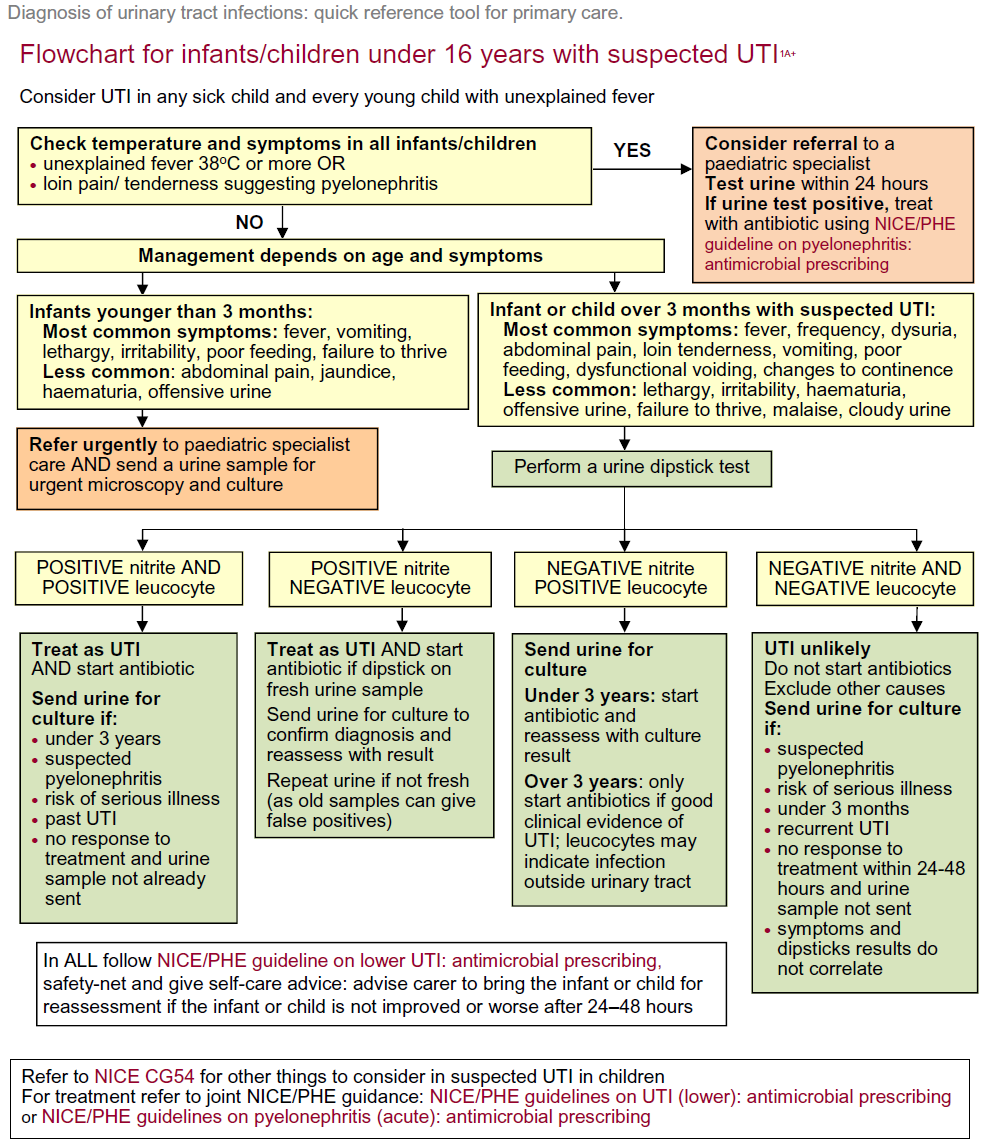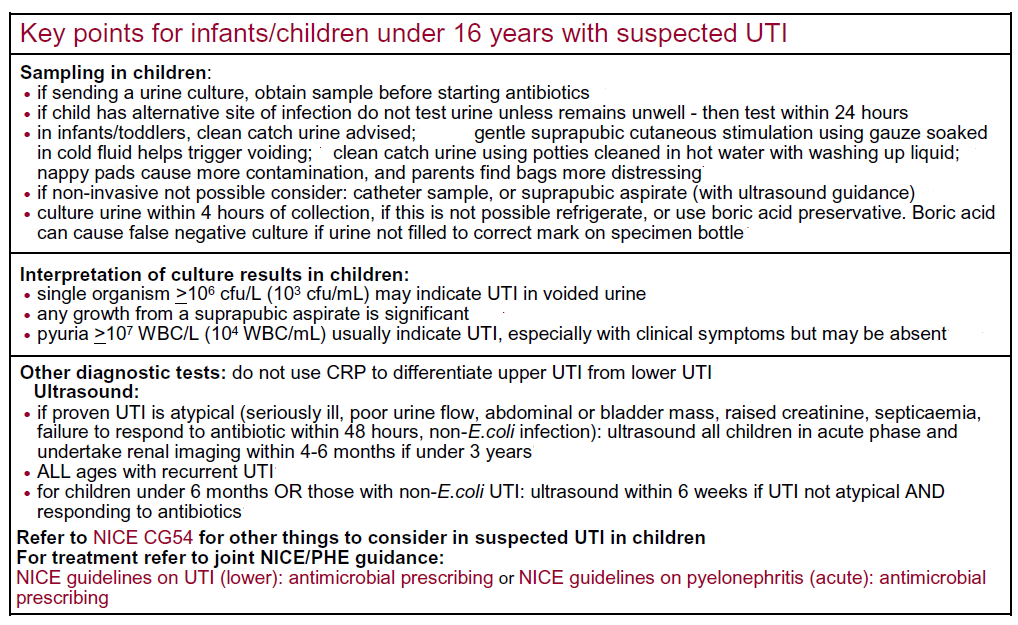Assessment and diagnosis of possible UTI in a child
UTI is a common bacterial infection that causes illness in children, in whom it may be difficult to diagnose as the presenting symptoms are often non-specific (1,2,3).
In children, the condition is often associated with renal tract abnormalities and is most common in males in the first three months of life as a result of congenital abnormalities. In older children, females are more commonly affected. Infection in pre-school boys is often associated with renal tract abnormality. Failure to diagnose and treat UTI quickly and effectively may result in renal scarring and ultimately loss of function. The phenomenon of vesicoureteric reflux, while predisposing children to UTI, may also be caused by UTI.
- Confirmation of UTI in children is dependent on the quality of the specimen, which is often difficult to obtain cleanly. The probability of UTI is increased by the isolation of the same organism from two specimens
. - Colony counts of >=10^6 cfu/L (10^3 cfu/mL) of a single species may be diagnostic of UTI in voided urine
- Generally, a pure growth of between 10^7-10^8 cfu/L (10^4-10^5 cfu/mL) is indicative of UTI in a carefully taken specimen
- Negative cultures or growth of <10^7 cfu/L (<10^4 cfu/mL) from bag urine may be diagnostically useful. Counts of >=10^8 cfu/L (>=10^5 cfu/mL) should be confirmed by culture of a more reliable specimen, either a single urethral catheter specimen or, preferably, an SPA
- Bacteriuria usually exceeds >=10^8 cfu/L (>=10^5 cfu/mL) in SPAs from children with acute UTI, although any growth is potentially significant.
PHE have suggested a flow chart for diagnosis of a UTI in a child (2):


Reference:
- Public Health England. 2018. SMI B41: UK Standards for Microbiology 640 Investigations-Investigation of urine. United Kingdom
- NICE (September 2017).Urinary tract infection in children: diagnosis, treatment and long-term management
- Public Health England (August 2019). Diagnosis of urinary tract infections Quick reference tool for primary care.
Related pages
Create an account to add page annotations
Add information to this page that would be handy to have on hand during a consultation, such as a web address or phone number. This information will always be displayed when you visit this page